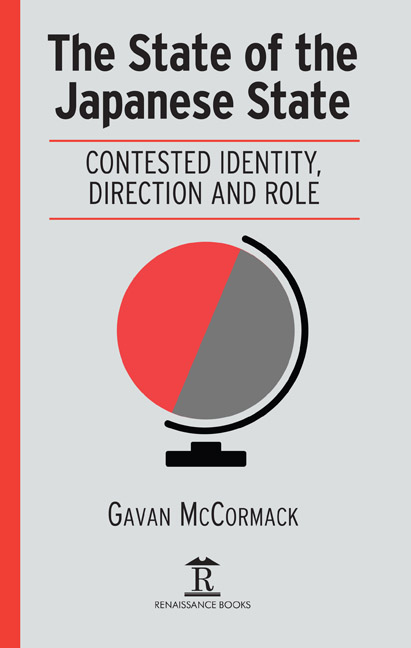Book contents
- Frontmatter
- Contents
- Preface
- Chapter 1 The Improbable Package
- Chapter 2 The Client State
- Chapter 3 The Client State’s Client State
- Chapter 4 Okinawa – State Violence and Civic Resistance
- Chapter 5 Around the East [China] Sea
- Chapter 6 The Construction State
- Chapter 7 The Constitutional State
- Chapter 8 The Rampant State
- Chapter 9 Conclusion
- Afterword
- Index
Chapter 7 - The Constitutional State
Published online by Cambridge University Press: 04 May 2022
- Frontmatter
- Contents
- Preface
- Chapter 1 The Improbable Package
- Chapter 2 The Client State
- Chapter 3 The Client State’s Client State
- Chapter 4 Okinawa – State Violence and Civic Resistance
- Chapter 5 Around the East [China] Sea
- Chapter 6 The Construction State
- Chapter 7 The Constitutional State
- Chapter 8 The Rampant State
- Chapter 9 Conclusion
- Afterword
- Index
Summary
FOR SEVEN DECADES the Japanese state has preserved a delicate equilibrium between the pacifism of its constitution and the military alliance (ever deepening) with the greatest and most war-prone power in history, one that claims a status above the law and is at war on multiple fronts. Those who head the Japanese state must juggle emperor centeredness and popular sovereignty, assertions of the unique, pure, beautiful Japan and dedication to US purpose (most conspicuous since the advent of a US government committed explicitly to “America First”). The Liberal Democratic Party had enshrined the notion of revision in its charter ever since the party was founded in 1955 and Abe had long made clear that revision was his greatest ambition. Since he suffered crushing electoral defeat when he made it part of his explicit agenda in 2007, however, he, and subsequent Prime Ministers, played the issue down in successive elections. In 2012, shortly before Abe's return to the Prime Ministership, the ruling LDP produced a complete revised constitution draft, and the 2016 elections at last delivered him the two-thirds majority dominance in both Houses of the National Diet constitutionally necessary to initiate revision. He is generally agreed to have won that majority on economic policy promises, but he can and almost certainly will exploit it to accomplish his long-desired restructuring of the state.
In May 2017, on the 70th anniversary of the constitution coming into effect in 1947, in a Prime Ministerial video message to the National Association for a Constitution for a Beautiful Japan, Abe at last unveiled his timetable and outline plan for revision. He was looking forward to “a newly reborn Japan [that] begins to move strongly forward.”
The momentum he might have expected to carry this constitutional agenda forward was shaken by events following that announcement that led (for reasons discussed below) to a fresh general election in October. A detailed revision program is expected in coming months, but a number of observations may be made.
POPULAR SOVEREIGNTY AND SYMBOLIC EMPEROR
As discussed in chapter one, the 1947 problem for the Occupationrun government was to reconcile popular sovereignty with symbolic emperor, and national sovereignty with the denial of one sovereign right, that to possess and use armed force.
- Type
- Chapter
- Information
- The State of the Japanese StateContested Identity, Direction and Role, pp. 190 - 208Publisher: Amsterdam University PressPrint publication year: 2018

